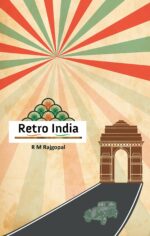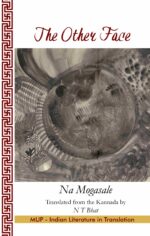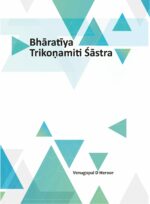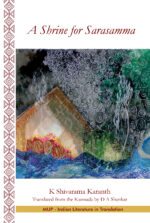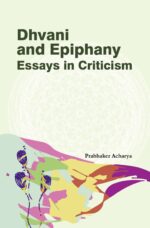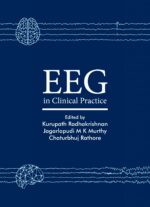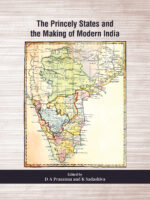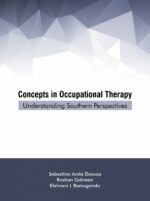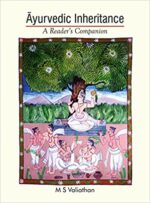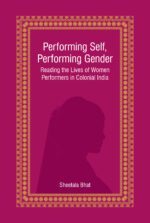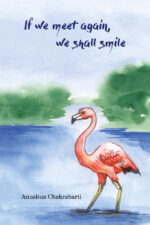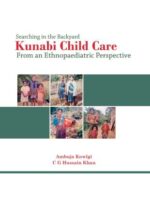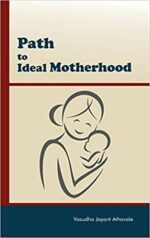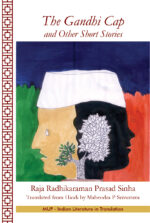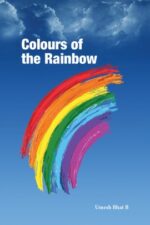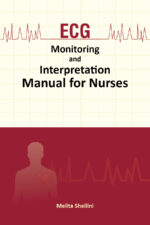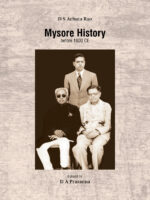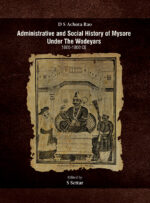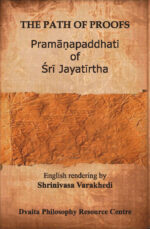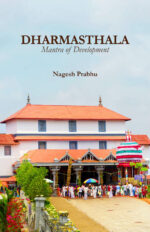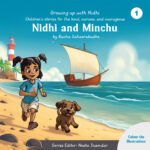-
Retro India
₹350.00Retro India is, in essence, a trip down the memory lane, meandering through the sixties, seventies, eighties and nineties of the twentieth century. Today?s youth would battle with the fact that India had experienced a sweeping change from what it was in just as recently as thirty years ago. What kind of a moribund economy could engender a continuing state of shortages, high inflation, low growth, a paucity of jobs, rampant smuggling, and a foreign exchange situation that was perpetually perilous! It took major political and economical transformations to remove the shackles that then bound the economy. This narrative provides a clear bridge between the then and now for the younger generations. And for the older reader, it provides a heap of nostalgia. In the latter half of the twentieth century, the changes in India have been vast and comprehensive. In these decades, economic indicators such as India?s growth in GDP rate, the proliferation of the number of Airlines in the Indian skies, the multiplying of car models, the flourishing of telephone connections and moving on to the world of mobiles, televisions going colour from black and white to operating with over a thousand channels, India turning digital, and so on clearly directs that India had taken a crucial turn in its history. India has changed. And how! The Indian consumer grins. This is notwithstanding the fact that poverty is endemic and the gulf between the rich and the poor
-
The Other Face
₹550.00Author: Na Mogasale Translator: N T Bhat
Set in a fictitious village called Kanthapura in Kasaragod district, Mukhāntara spans across the life of seven generations of a Havyaka Brahmin family. A story about the realities of living in a society marked by caste distinctions, the desire to find communal harmony and the tribulations of the characters through the entirety of the novel, it is also a tale of changing times and people. After unexpectedly coming into possession of a huge portion of land, Thirumalēshwara Bhat of Īshwarīmūle becomes a satisfied man. But childless, Thirumalēshwara Bhat and his wife Pārvathakka decide to adopt Venkappaiah and also give shelter to his widowed mother, Rathnamma. Venkappaiah is to inherit Thirumalēshwara’s vast wealth but when Krishnaiah, the illegitimate child of Thirumalēshwara and Rathnamma is born, rivalry ensues. Through the overlapping narratives of the characters, we get a glimpse into their journey from tradition to modernity. The characters strive to reshape new values when old values are slowly questioned and erased as they move on and are swept along in the waves of globalization.
Also available on

eBook available on

-
Bhāratīya Trikoṇamiti Śāstra
₹550.00Indian Trigonometry was developed as a powerful mathematical tool for Siddhantic Astronomy. The book, Bharatiya Trikonamiti sastra (Hindu Trigonometry) deals with all the relevant topics of Indian trigonometry, including trigonometrical identities and other formulas, trigonometrical tables, methods of interpolation and trigonometrical series, etc. The subject matter is discussed in eleven chapters divided into 80 sections and 50 sub-sections, involving translations of 250 verses spread over in 38 classical Sanskrit works and based on 42 research articles published in 16 research journals. By including material of the late Aryabhata School or Kerala Aryabhata School, the author has made the book comprehensive and up-to-date. Indeed, the book is fascinating and significant. It is a definite contribution in the study of the history of Indian mathematics. The book is the English version of the Kannada book of the same title.
-
A Shrine for Sarasamma
₹180.00A Shrine for Sarasamma is the English translation of Sarasammana Samadhi written by K Shivarama Karanth in 1937, in his early thirties. It offers one of the most authentic and searing accounts of Indian womanhood, which consistently, and through the ages, has suffered deep anguish, humiliation and crushing insult from the oppressive patriarchal culture prevalent in all parts of India and among all castes and classes. The novel is a classic in Kannada and the English translation is an attempt to bring to the English reading audience a taste of the regional classic.
-
Dhvani and Epiphany: Essays in Criticism (12 Essays)
₹270.00Dhvani and Epiphany examines the work of major Indian poets like Nissim Ezekiel and Arun Kolatkar; the struggle of young poets to find an audience; and the art of fiction. But its main focus is on the nature of creativity. How does an artist communicate his meaning? What makes a work genuinely creative? Through a sensitive exploration of poetry ? ranging from the simple poems of a child, Poorna Prajna, to the complex ?Byzantium Poems? of Yeats ? the first seven essays try to show how a poem comes to life when it speaks to us and we listen to its dhvani and respond. Even in fiction, it is not all realism. There is irony in exploring the paradoxical nature of reality; events taking on symbolic overtones; and epiphany, moments of illumination and insights ? when surprising correspondences are seen. Writers cannot surprise and delight their audience if they themselves are not surprised and delighted by such insights.
-
EEG in Clinical Practice
₹2,500.00EEG in Clinical Practice is a comprehensive, easy-to-read, and well-illustrated book on scalp EEG. Through the text in its 21 chapters, 553 figures, and 94 tables describes practically every aspect of the scalp EEG including pathophysiology, technical challenges, and its value and limitations in the diagnosis of epilepsy and related disorders. Some of the recent advances such as EEG monitoring in intensive care units, quantitative EEG, and high frequency oscillations are also covered. Adhering to the systematic approach to reading and interpretation of the EEG, depicted in the final chapter, may help to minimize misreading of EEG and its consequences, which is highly prevalent especially in the developing countries. Though it is targeted at neurology trainees, young practicing neurologists, and neurotechnologists, it also serves as a reference guide for all the neurologists and electrophysiologists.
-
The Princely States and the Making of Modern India
₹640.00India?s Princely States have enjoyed only a minor place in the narrative of modern nationhood. Certain Princely States used the dynamics of transfer of power to carve autonomy from the colonial British to advance their societies. Some of the Princely States modernized their education, public health and industrial sectors way ahead of the British administered territories. Prof Washbrook provides a macro picture of the dynamics in the Princely States of South India and sees a distinctive and indigenous form of modernity. Hierarchy, religion, heredity and caste were not obliterated for rationalism and secularism. As socialism and pseudo-secularism are fading away, the significance of the indigenous forms of modernity of the Princely States becomes more relevant to understand India in the 21st century. Ten historian thought leaders provide an interesting perspective to make it a compelling read. K Sadashiva is the architect of this book. As he developed the theme and brought together historians from various parts of the world, an interesting tapestry was woven. He is a historian actively researching the Indian Union, the Princely States and the rise of political power of caste and class in independent India. D A Prasanna has an interest in history, visual art, public health and education. He has supported new initiatives in these fields and has actively nurtured ideas to result in outcomes
-
Concepts in Occupational Therapy- Understanding Southern Perspectives
₹895.00Concepts in Occupational Therapy: Understanding Southern Perspectives attempts to facilitate contextually relevant interpretation and application of core occupational science and occupational therapy concepts from the vantage point of academics in the Global South. With around 30 authors mostly from India and South Africa, the book offers diverse insights into the socioeconomic, cultural and political factors influencing occupational therapy practice in the southern region. It describes the profession?s development in India and South Africa. It elucidates the core skills, values and attitudes essential for practice, and more importantly, discusses the challenges to and opportunities for the profession in the Global South. It provides an integrated view of occupational therapy and is an essential tool for occupational therapists, educators, students, researchers and occupational scientists.
-
Ayurvedic Inheritance- A Reader’s Companion
₹650.00In ancient India, learning spanned four quarters of one’s life. Learning was sought from the teacher, from one’s individual effort, from fellow students and in the last quarter, from the school of life itself. This book belongs to the third quarter for students of Ayurveda regardless of their background in medicine, science, or humanities. Apart from topics in the eight branches of Ayurveda, the book also deals with Ayurvedic Biology which seeks to study the concepts and procedures of Ayurveda with the tools of modern biology. M S Valiathan is a National Research Professor of the Government of India. He is a medical graduate from the University of Kerala and completed his postgraduate training in general surgery from the University of Liverpool and other hospitals in the UK. He did his specialisation in cardiac surgery from the Johns Hopkins and Georgetown University Hospitals in the US. He was a cardiac surgeon for over three decades. His shift to Ayurvedic studies resulted in the publication of three volumes on Caraka, Susruta and Vagbhata, and an Introduction to Ayurveda. The Department of Science and Technology set up a Task Force in Ayurvedic Biology under his chairmanship to promote research in the nascent discipline.
Interested readers may write to us at mup@manipal.edu about purchasing the book.
International Edition available on 
South Asia Edition available on
-
Performing Self/Performing Gender: Reading the lives of Women Performers in Colonial India
₹299.00This book explores the shifting identity of the female performer in India, starting from the late 19th century to the early years of independence, through the study of autobiographies and memoirs. It attempts to make visible the actress figure by entering the history of performance, guided by the voice of the female performer. The discussion on performing woman in this book spans across the performing traditions of the tawaif, actresses in public theatre, early Indian film actresses, and actresses in the Indian People?s Theatre and the Prithvi Theatre. Sheetala Bhat is an actress and a writer from Sirsi, a small town in the Western Ghats of Karnataka. She holds an MA in English Literature from Manipal Centre for Philosophy and Humanities, Manipal University, Manipal. She worked with Chintana repertory, exploring the possibilities of theatre in education in government schools in Karnataka. She writes short stories and poetry in Kannada. Being a reclusive reader and an enthusiastic actress, she often finds herself rummaging and weaving in between the fields of theatre and Indian literature, with an emphasis on the gender concerns in these areas. Performing Self, Performing Gender: Reading the Lives of Women Performers in Colonial India is her first book.
-
If we meet again we shall smile
₹199.00People leave our lives. Some simply walk away from our world while some leave this world altogether. Through visuals, poetry and short stories, the author has a dialogue with the reader that takes them both through a journey full of characters that are no more, and yet have shaped the story. This fictional dialogue is a short trip down memory lane that visits the relationships one keeps hidden beneath.
Anushua Chakrabarti, originally from Kolkata, is a wandering minstrel. She lives on travel and music. Anushua has completed her MBA from TAPMI, Manipal, India, post which she worked in top technology brands like HP and Microsoft. She is presently back in Kolkata, driving social service through her acquired experience. Anushua has faced several childhood traumas but she believes she is what she is today, not in spite of it; but because of it.
-
Searching in the Backyard: Kunabi Child Care From an Ethnopaediatric Perspective
₹480.00This work on ethnopaediatrics is a thick description and a critical analysis of the plural mix of child health care that exists among the Kunabi tribe, a marginalized tribal population in the forests of Western Karnataka. It points out the gaps that exist between modern health providers and the indigenous people. It shows how these gaps could be resolved if bottom-up ethnopaediatric approach is adopted. The volume will be beneficial to planners, policy makers, and modern health care providers who are involved in reproductive and child health programs in India. Ambuja Kowlgi is an anthropologist by profession and acclaimed as one of the best ethnographic fieldworker in her alma mater. She is a freelance consultant in anthropological analysis, translations, and editing. She has published articles in national and international journals. C G Hussain Khan is UGC Emeritus Fellow at the Department of Anthropology, Karnatak University and member of the National Advisory Committee, Anthropological Survey of India. He has served as ? Coordinator, International Diploma in Reproductive Health Management, Karnatak University Dharwad; Chairman, Anthropology Department, Karnatak University; Dean, Faculty of Social Sciences; and member, UGC Curriculum Development Committee (Anthropology). He has worked on WHO projects and, published books and articles in national and international journals.
-
Path to Ideal Motherhood
₹300.00Path to Ideal Motherhood is a complete guide on pre-conceptual counselling, pregnancy and childbirth. Pregnancy is to nurture a life within, where a would-be mother experiences physical, psychological, emotional and societal changes. A complete knowledge of pregnancy, and a sincere and positive effort by the would-be mother is what is required to make this journey an enriching experience, filled with fond memories. The book discusses and provides a detailed information on important facts of childbirth and pregnancy, lifestyle changes during pregnancy, along with the importance of breathing, nutrition, exercises, sleep, etc. The book also discusses the concept of Garbha Sanskar for a healthy baby. As a young mother nurtures a young life, the book seeks to nurture the young mother towards an ideal path to motherhood.
-
Cases in Brand Management and Services Marketing
₹550.00This book intends to connect concepts in Brand Management and Services Marketing, through the pedagogy of case method of teaching. The 15 cases, which rigorously followed a symptom-problem- alternatives-solution, frame work are written on the several managerial dilemmas and situations faced by organizational managers, pertaining to areas of Brand Management and Services Marketing; and can be broadly categorized under consumer products and service products. Under consumer products, it covers products such as ? furnishing, personal care, kitchen products, wellness products, food products, magazines, etc. and under service products it includes industries such as ? hospitals, hotels, airline ticketing, banks, event and e-commerce. All the cases focus on situations experienced in brand building, nurturing, and management. The pastures focused in the brand management cases are product development, positioning, segment identification, advertising, costing and pricing products, brand extension, brand equity, brand valuation, etc. and those focused on Services Marketing include: services delivery, process management, service quality, ambience and technology management, customer satisfaction, complaint management, etc. The cases are meant to strengthen the problem identification and problem solving skills of the present and future managers in the two areas.
-
The Gandhi Cap and Other Short Stories by Raja Radhikaraman Prasad Singh
₹345.00The book The Gandhi Cap and Other Short Stories offers a glimpse into the lifetime of work of a forgotten pioneer of Hindi fiction, Raja Radhikaraman Prasad Sinha. It is ironic that one cannot find a single book by this author who was so dedicated to Hindi literature. The stories in this collection are a testament not only to the contributions of Sinha to Hindi fiction but also, reflect the depth of political and social milieu of the times. Many readers will be moved by the elements patriotism, feminism, secularism, and spiritualism in these stories. Strong female characters are common in most of these stories. These characters provide both a moral fulcrum to the stories as well as reflect the struggle of women to balance prevailing customs with modernity. Some of these stories provide sharp political and social commentary that still have currency (The Gandhi Cap). Sinha incorporates a unique style of writing that uses lyrical prose and poetry together. He even employs a dialogue between the storyteller and a social gathering in the form of an epilogue, to offer a discourse on social dilemma about women?s plight to become modern while admonishing them to retain their Indian essence (An Expensive Bargain). We hope the readers will enjoy this wonderful collection.
-
Colours of the Rainbow
₹450.00The author, through Colours of the Rainbow, tells us that everyone is destined for his/her own rainbow with a pot of gold at the other end if, one has a will, works hard on it, and with a little bit of luck. The book narrates the dream journey of a village boy.
-
ECG Monitoring and Interpretation-Manual for Nurses
₹250.00This book has been written keeping in mind the technological advancements in the field of health care and the services that are demanded by the critical care staff nurses, who indeed one of the front line care givers in the critical care units. In this rapidly changing world, there are many challenges for a critical care nurse as the needs, expectations of the society are increasing, and the nursing care is moved towards the family oriented model from the traditional patient oriented model. A prudent critical care nurse needs to be competent in taking care of the patients. As a vital member of the health care team, the nurse is expected to be responsible and accountable for the outcome of the patient under her/his care.
-
Mysore History before 1800 CE
₹235.00Mysore History before 1800 CE is about the life and work of Prof. D S Achuta Rao. His research on Mysore history is represented by ten indexed articles he published during 1940-65. He actively popularized India?s history and its glorious past. Three such articles are included as they present initiatives in Indian History by the Maharajas College History Society, Colonial Researchers on India and Mysore Government?s initiative in a Kannada Encyclopedia. In his biography in the second part, his students and children have written about his life as a teacher and father, providing a context of his period. The book presents an interesting window to history research in the middle of last century.
-
Administrative and Social History of Mysore under the Wodeyars, 1600-1800 CE
₹450.00In Administrative and Social History of Mysore Under the Wodeyars (1600-1800 CE), Prof D S Achuta Rao presents an engaging account of the period. Believed to be the lineal descendants of the Vijayanagara, the kings of Mysore were described as ruling the earth seated on the jeweled throne of Karnataka. Tracing the earliest descent of Raja Wodeyar, the first remarkable ruler of the dynasty till the mid-1900, the book vividly draws before us a portrait of the political, military, law, social, religious, education, art and culture, and administrative construct of two centuries of the Wodeyar rule in Mysore. Capturing the significant features of the governance of the day, the book is a detailed and masterful telling of this phase in the history of Mysore, Karnataka, India. Scholarly and impressive, the book is a formidable achievement in terms of coverage and content.
-
The Path of Proofs: Pramanapaddhati of Sri Jayatirtha
₹250.00The Path of Proofs: Pramanapaddhati of Sri Jayatirtha Epistemology of the Dvaita school of thought is presented in this short monograph Pramanapaddhati the Path of Proofs, authored by Sri Jayatirtha. Epistemology is the science of knowledge that deals with the origin and nature of cognitive events and their means. Acarya Madhva, the proponent of the Dvaita school, has explained about the epistemology of this new school in his works. Since Madhva’s language is profound and the elucidations are scattered over his several works, it is difficult to comprehend for a novice. Hence, Pramanapaddhati was composed by his successor of third generation Sri Jayatirtha. The simple and captivating style of this work is sure to ignite the interest in the readers to conduct further study in detail. This work is not only regarded as a standard textbook of Dvaita studies, but also considered as a basic authentic work in the Dvaita dialectic literature. The work is classified into three chapters; Pratyaksa, Anumana and Agama as a compendious yet full treatment of the Dvaita epistemology in smaller captions. Its discussion on the standpoints of other schools on various topics and their criticism is not much detailed. However, it is systematized and presented in an easily comprehendible style that can make even a novice understand the intricacies of Dvaita epistemology. The unique commentary skill of Sri Jayatirtha comprises of profound scholarship, style of exposition, lucid language, commitment to the original author, views on opposition with thorough knowledge, logical integrity, appropriate and comprehensive method of thinking. This work is rendered into English by Prof Shrinivasa Varakhedi adopting the mirror-translation method.

